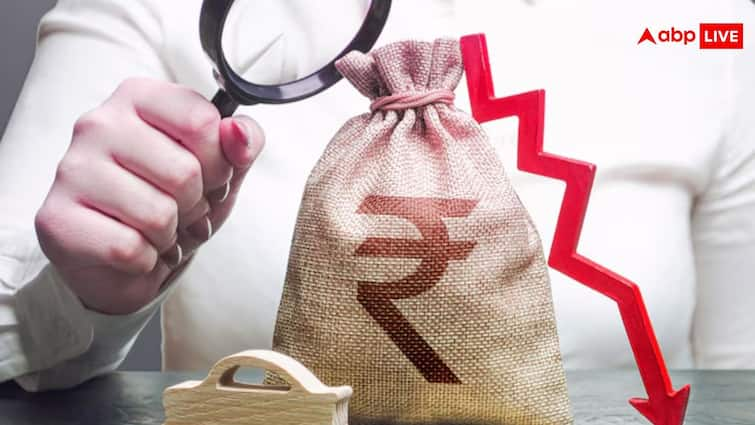- June 14, 2023
Wpi: May WPI inflation hits over 7-year low of (-) 3.48% on declining fuel, manufactured items prices – Times of India

NEW DELHI: The wholesale price-based inflation rate fell to a seven-and-half-year low of (-) 3.48 per cent in May on easing prices of food, fuel and manufactured items, strengthening the case for the RBI to continue with the rate hike pause in the current fiscal.
This is the second straight month when WPI has been in the negative zone, mainly due to a higher base and falling prices of fuel and manufactured goods. Food prices also eased during May.
A negative WPI inflation, technically termed as deflation, means that overall wholesale prices have been falling year-on-year.
The wholesale price index (WPI) comes within days after the government data showed retail inflation, closely tracked by the RBI to decide on monetary policy, dipped to a 25-month low of 4.25 per cent in May.
The decline in the WPI-based inflation rate is usually reflected in the retail inflation data with a time lag.
“Decline in the rate of inflation in May 2023 is primarily contributed by fall in prices of mineral oils, basic metals, food products, textiles, non-food articles, crude petroleum & natural gas and chemical & chemical products,” the commerce and industry ministry said on Wednesday.
This is the lowest WPI inflation print since November 2015, when it was (-) 3.7 per cent.
In May 2022, WPI inflation was at 16.63 per cent. Last month, it was (-) 0.92 per cent.
Inflation in food articles eased to 1.51 per cent in May from 3.54 per cent in April.
Vegetables saw a decline in inflation at (-) 20.12 per cent, while the same in potato and onion was (-) 18.71 per cent and (-) 7.25 per cent, respectively.
However, inflation in pulses saw a sharp uptick at 5.76 per cent, and in wheat, it was 6.15 per cent.
Fuel and power basket inflation eased to (-) 9.17 per cent in May against 0.93 per cent in April.
“Indeed, India has doubled its imports of low-cost Russian oil over the past year. This has helped keep the cost of energy manageable and helped to tame its high inflation,” Moody’s Analytics Chief APAC Economist Steve Cochrane said.
In manufactured products, the inflation rate was (-) 2.97 per cent in the month under review against (-) 2.42 per cent in April.
Assocham Secretary General Deepak Sood said the negative trajectory in wholesale prices should help the overall input cost in the value chain.
“While we expect the trend to continue, we need to watch out how monsoon plays out as food prices are influenced a lot more by rains than manufactured goods,” Sood said.
Icra, in a note, said the WPI deflation is likely to print at 2.5-3.5 per cent in June 2023, supported by an elevated base in the year-ago month.
Barclays MD and Head of EM Asia (ex-China) Economics Rahul Bajoria said wholesale prices fell further last month as pressures eased across food, fuel and core. Falling commodity prices are reducing input costs for producers, but delayed pass-through to retail prices means the gap between CPI and WPI inflation has widened.
“We expect retail inflation to be on a moderating trajectory in the near term, which suggests the MPC is likely to be on hold for the rest of fiscal 2023-24,” Bajoria said, adding that the “RBI will want to see headline (and ideally core) CPI inflation moving towards the 4 per cent target on a durable basis, before considering rate cuts”.
IDFC First Bank, in a research note, said for the full fiscal, WPI inflation is tracking at 0.4 per cent against 9.6 per cent in the last fiscal, with negative inflation prints persisting till the September quarter.
The RBI, in its policy review last week, kept benchmark interest rates unchanged at 6.5 per cent on account of easing inflation.
This is the second straight month when WPI has been in the negative zone, mainly due to a higher base and falling prices of fuel and manufactured goods. Food prices also eased during May.
A negative WPI inflation, technically termed as deflation, means that overall wholesale prices have been falling year-on-year.
The wholesale price index (WPI) comes within days after the government data showed retail inflation, closely tracked by the RBI to decide on monetary policy, dipped to a 25-month low of 4.25 per cent in May.
The decline in the WPI-based inflation rate is usually reflected in the retail inflation data with a time lag.
“Decline in the rate of inflation in May 2023 is primarily contributed by fall in prices of mineral oils, basic metals, food products, textiles, non-food articles, crude petroleum & natural gas and chemical & chemical products,” the commerce and industry ministry said on Wednesday.
This is the lowest WPI inflation print since November 2015, when it was (-) 3.7 per cent.
In May 2022, WPI inflation was at 16.63 per cent. Last month, it was (-) 0.92 per cent.
Inflation in food articles eased to 1.51 per cent in May from 3.54 per cent in April.
Vegetables saw a decline in inflation at (-) 20.12 per cent, while the same in potato and onion was (-) 18.71 per cent and (-) 7.25 per cent, respectively.
However, inflation in pulses saw a sharp uptick at 5.76 per cent, and in wheat, it was 6.15 per cent.
Fuel and power basket inflation eased to (-) 9.17 per cent in May against 0.93 per cent in April.
“Indeed, India has doubled its imports of low-cost Russian oil over the past year. This has helped keep the cost of energy manageable and helped to tame its high inflation,” Moody’s Analytics Chief APAC Economist Steve Cochrane said.
In manufactured products, the inflation rate was (-) 2.97 per cent in the month under review against (-) 2.42 per cent in April.
Assocham Secretary General Deepak Sood said the negative trajectory in wholesale prices should help the overall input cost in the value chain.
“While we expect the trend to continue, we need to watch out how monsoon plays out as food prices are influenced a lot more by rains than manufactured goods,” Sood said.
Icra, in a note, said the WPI deflation is likely to print at 2.5-3.5 per cent in June 2023, supported by an elevated base in the year-ago month.
Barclays MD and Head of EM Asia (ex-China) Economics Rahul Bajoria said wholesale prices fell further last month as pressures eased across food, fuel and core. Falling commodity prices are reducing input costs for producers, but delayed pass-through to retail prices means the gap between CPI and WPI inflation has widened.
“We expect retail inflation to be on a moderating trajectory in the near term, which suggests the MPC is likely to be on hold for the rest of fiscal 2023-24,” Bajoria said, adding that the “RBI will want to see headline (and ideally core) CPI inflation moving towards the 4 per cent target on a durable basis, before considering rate cuts”.
IDFC First Bank, in a research note, said for the full fiscal, WPI inflation is tracking at 0.4 per cent against 9.6 per cent in the last fiscal, with negative inflation prints persisting till the September quarter.
The RBI, in its policy review last week, kept benchmark interest rates unchanged at 6.5 per cent on account of easing inflation.







